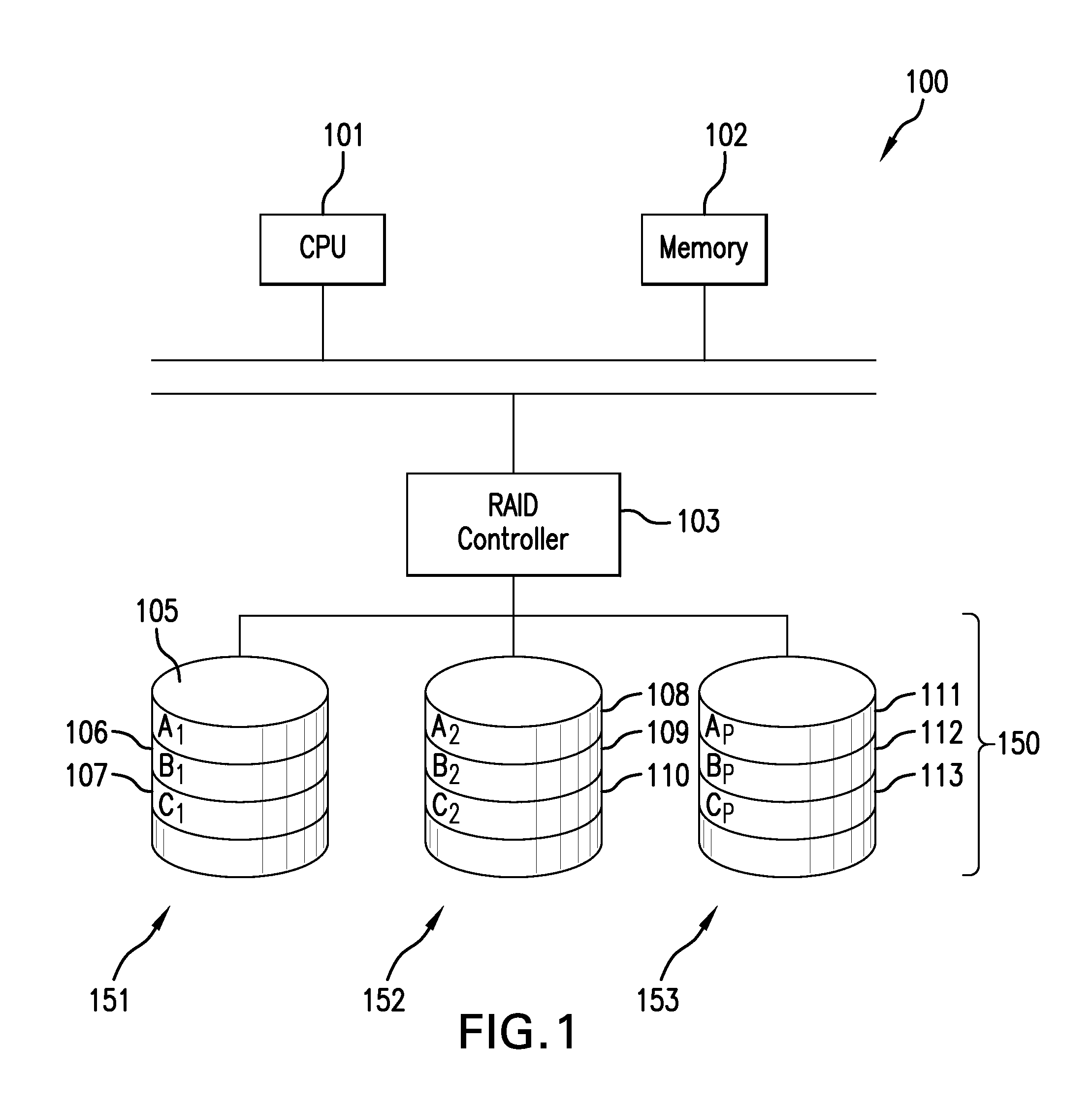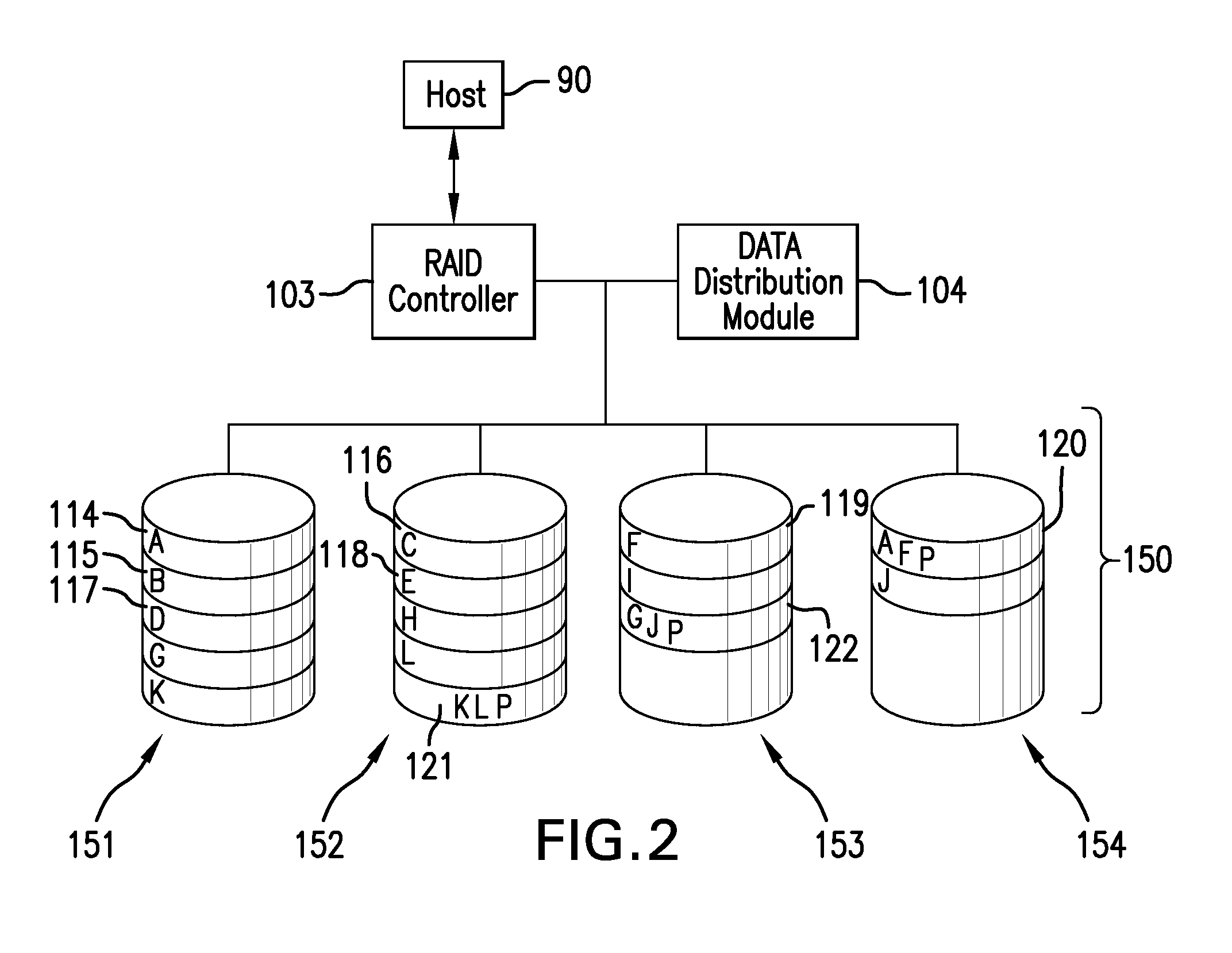System and method for allocating data in memory array having regions of varying storage reliability
a memory array and data technology, applied in the direction of memory adressing/allocation/relocation, redundant data error correction, instruments, etc., can solve the problems of generating heat, noise, wear, and waste of energy, assembly involving moving parts will generate friction, waste heat, noise,
- Summary
- Abstract
- Description
- Claims
- Application Information
AI Technical Summary
Benefits of technology
Problems solved by technology
Method used
Image
Examples
Embodiment Construction
[0029]The subject system and method distribute bands of data written across a memory array where the array has an unevenly distributed storage reliability. The data bands are written in such manner that each data band has a substantially equalized likelihood of storage errors occurring therein. While the array may have storage regions of greatly differing reliability, the data bands written thereto have been selectively allocated therein to maintain the likelihood of error for a given band within a manageable threshold such that parity or error correction measures may suitably address such errors. The subject system and method may be thought of as providing measures for data bucketing. Rather than utilizing a strict uniform spatial arrangement of data bands, perhaps in a horizontal stripe across all channels, data bands may be defined to be offset around different regions of reliabiltiy of the memory array to balance a collective error rate of each band to more closely match a prede...
PUM
 Login to View More
Login to View More Abstract
Description
Claims
Application Information
 Login to View More
Login to View More - R&D
- Intellectual Property
- Life Sciences
- Materials
- Tech Scout
- Unparalleled Data Quality
- Higher Quality Content
- 60% Fewer Hallucinations
Browse by: Latest US Patents, China's latest patents, Technical Efficacy Thesaurus, Application Domain, Technology Topic, Popular Technical Reports.
© 2025 PatSnap. All rights reserved.Legal|Privacy policy|Modern Slavery Act Transparency Statement|Sitemap|About US| Contact US: help@patsnap.com



